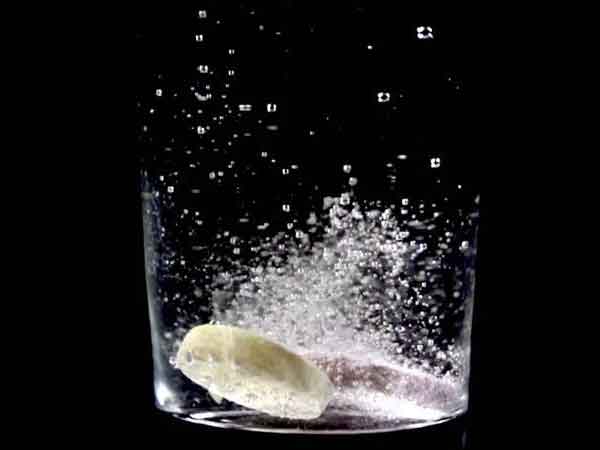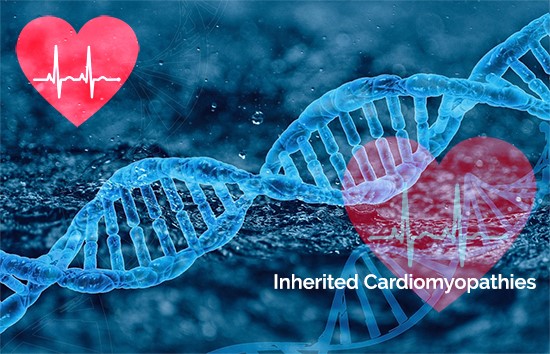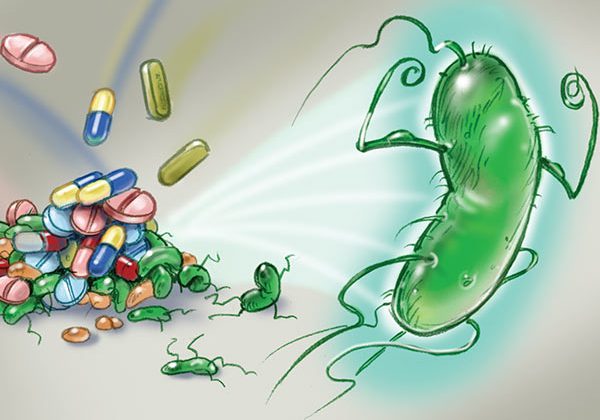Salt in soluble paracetamol linked to increase risk of cardiovascular disease and death
Doctors have warned that people should try to avoid taking dissolving, fizzy paracetamol that contains salt, following findings from a large study that shows a link with a significantly increased risk of heart attacks, stroke, heart failure and death.
The study of nearly 300,000 patients registered with UK general practitioners (GPs) is published today (Thursday) in the European Heart Journal.
Sodium, one of the main components of salt, is often used to help drugs such as paracetamol dissolve and disintegrate in water. However, effervescent and soluble formulations of 0.5 g tablets of paracetamol can contain 0.44 and 0.39 g of sodium respectively. If a person took the maximum daily dose of two 0.5 g tablets every six hours, they would consume 3.5 and 3.1 g of sodium respectively – a dose that exceeds the total daily intake of 2 g a day recommended by the World Health Organization. Other formulations exist that contain an extremely small amount of sodium or none at all.
Too much salt in diets is known to be a major public health problem and is associated with an increased risk of cardiovascular disease (CVD) and death among patients with high blood pressure. However, there is inconsistent evidence of a similar risk for people with normal blood pressure and it would be unethical to conduct a randomised controlled trial to look at this.
Researchers, led by Professor Chao Zeng from Xiangya Hospital, Central South University, Changsha, China, analysed data from the UK’s Health Improvement Network, which is an electronic medical database of GPs records for approximately 17 million people. They looked at 4,532 patients with high blood pressure who had been prescribed sodium-containing paracetamol and compared them with 146,866 patients with high blood pressure who had been prescribed paracetamol without sodium. They also compared 5,351 patients without high blood pressure who were prescribed sodium-containing paracetamol with 141,948 patients without high blood pressure prescribed non-sodium-containing paracetamol. The patients were aged 60-90 years and the researchers followed them up for a year.
The researchers found the risk of heart attack, stroke or heart failure after one year for patients with high blood pressure taking sodium-containing paracetamol was 5.6% (122 cases of CVD), while it was 4.6% (3051 CVD cases) among those taking non-sodium-containing paracetamol. The risk of death was also higher; the one-year risk was 7.6% (404 deaths) and 6.1% (5,510 deaths), respectively.
There was a similar increased risk among patients without high blood pressure. Among those taking sodium-containing paracetamol, the one-year CVD risk was 4.4% (105 cases of CVD) and 3.7% (2079 cases of CVD) among those taking non-sodium-containing paracetamol. The risk of dying was 7.3% (517 deaths) and 5.9% (5,190 deaths), respectively.
Prof. Zeng said: “We also found that the risk of cardiovascular disease and death increased as the duration of sodium-containing paracetamol intake increased. The risk of cardiovascular disease increased by a quarter for patients with high blood pressure who had one prescription of sodium-containing paracetamol, and it increased by nearly a half for patients who had five or more prescriptions of sodium-containing paracetamol. We saw similar increases in people without high blood pressure. The risk of death also increased with increasing doses of sodium-containing paracetamol in both patients with and without high blood pressure.”
Sodium is used widely in drug preparations for enhancing solubility and disintegration. In 2018, 170 people per 10,000 of the population in the UK were using sodium-containing medications, with a higher proportion among women.
In an editorial to accompany the research paper, Alta Schutte, professor of cardiac, vascular and metabolic medicine at the University of New South Wales and The George Institute for Global Health, Sydney, Australia, and Bruce Neal, executive director of The George Institute, and professor of clinical epidemiology at Imperial College London, UK, write that in the UK alone in 2014 there were 42 million paracetamol-containing medicines prescribed, with a further 200 million packs sold over the counter.
“This equates to ~6,300 tons of paracetamol sold each year in the UK, with the figure for France close to 10,000 tons. Fortunately, only a small proportion of paracetamol formulations contain sodium but, with ‘fast-acting’ and ‘fizzy’ medications increasing in popularity, the adverse effects of medication-related sodium intake look set to rise rather than fall,” they write.
Prof. Zeng said that clinicians and patients should be aware of the risks associated with paracetamol that contains sodium and avoid unnecessary consumption, especially when the medication is taken for a long period of time.
“Given that the pain relief effect of non-sodium-containing paracetamol is similar to that of sodium-containing paracetamol, clinicians may prescribe non-sodium-containing paracetamol to their patients to minimise the risk of cardiovascular disease and death. People should pay attention not only to salt intake in their food but also not overlook hidden salt intake from the medication in their cabinet,” he said.
“Although the US Food and Drug Administration requires that all over-the-counter medications should label the sodium content, no warning has been issued about the potentially detrimental effect of sodium-containing paracetamol on the risks of hypertension, cardiovascular disease and death. Our results suggest re-visiting the safety profile of effervescent and soluble paracetamol.”
Profs. Schutte and Neal call for urgent action in their editorial. “The weight of the evidence makes ongoing inaction on sodium-containing medications untenable,” they write. “The widespread use of effervescent medication in the general population, and the enormous doses of sodium that can be consumed inadvertently by unsuspecting consumers requires urgent action. Particularly concerning is the observation in some surveys that up to 94% of users of fizzy medications are self-medication using over-the-counter preparations. There is an immediate need for protection of consumers against these risks. The most plausible and effective strategy is likely to be the mandatory labelling of all medications containing significant quantities of sodium with a front-of-pack warning label . . . Information programmes that raise public and practitioner awareness of the hidden sodium in medications, and education about the need to avoid effervescent, dispersible, and soluble medicines in all but essential circumstances should also be considered.”
Strengths of the study include its large size and the fact the researchers looked at people with and without a diagnosis of high blood pressure. Limitations include the fact that this is an observational study and can show only that there is an association between salt in paracetamol and CVD and deaths, rather than that salt causes these events; there was a lack of data on dietary intake of salt and excretion of salt from urinary samples; the researchers took account of factors that could affect the results, but some may not have been accounted for, such as genetic traits; the use of over-the-counter paracetamol was not recorded, however by restricting the study to those over 60 who qualify for free prescriptions in the UK, the risk of this is minimised; patients may not have adhered to the medication prescribed by their doctors.
Source: European Society of Cardiology (ESC)
Full bibliographic information
“Sodium-containing acetaminophen and cardiovascular outcomes in individuals with and without hypertension”, by Chao Zeng et al. European Heart Journal. doi:10.1093/eurheartj/ehac059
and
“The sodium hidden in medication: a tough pill to swallow”, by Aletta E. Schutte and Bruce Neal. European Heart Journal. doi:10.1093/eurheartj/ehab888
European Society of Cardiology (ESC)





